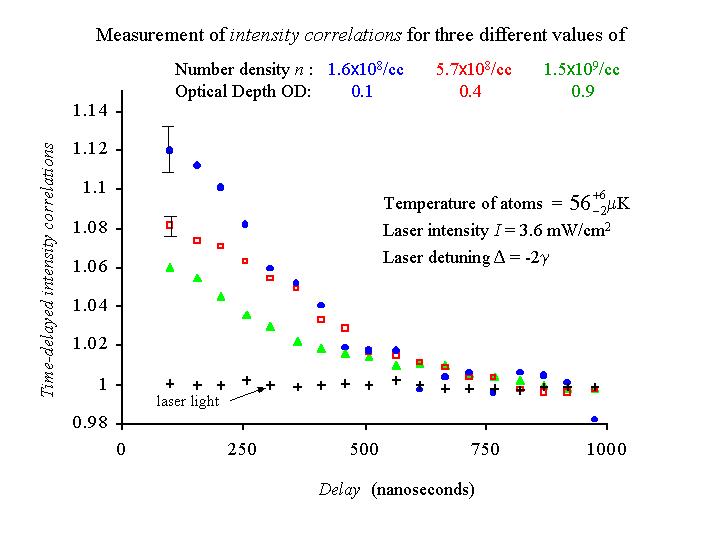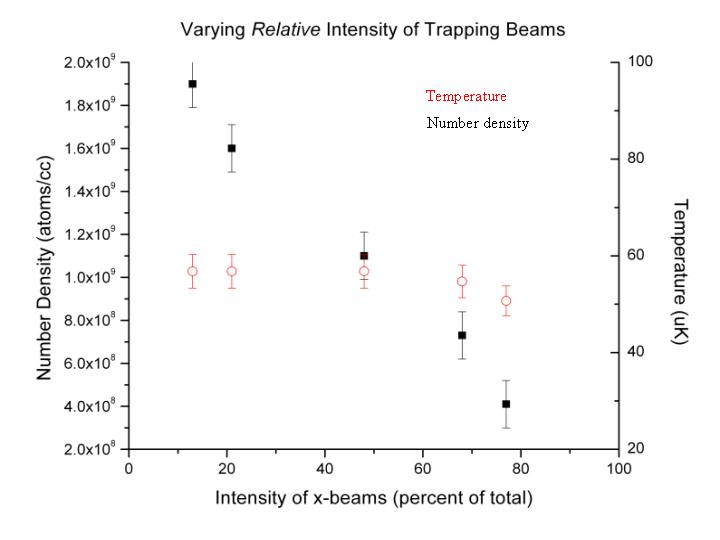Photon transport in cold atom clouds:
Perhaps the most intensively studied feature of photon transport in
cold atom clouds is that of Radiation Trapping. This
occurs in an illuminated gas of atoms when the atoms, instead of
acting as independent scatterers of the light, start exchanging photons
with each other. Photons are therefore "trapped" inside the sample for
a little while before exiting. It is important to develop sensitive
indicators of radiation trapping to help overcome it's deleterious
decohering effects during the preparation of coherent atomic samples
for quantum computing applications.
We recently detected the presence of small amounts
of radiation trapping in dilute atomic samples at densities as low as 6x108/cm3
(optical depth ~ 0.4), an order of magnitude less than where
effects of radiation trapping in cold atom clouds have been previously
observed. We achieved this by measuring the normalized intensity
correlations of light scattered from the cold atoms. These correlations
are equal to unity for a coherent state. The sensitivity of the
correlations to radiation trapping was predicted, then demonstrated, as shown
below.
A representative error bar for each data set is shown.

Here is a picture of the experimental
setup
used in 2004 for the detection of radiation trapping in cold dilute
atomic
samples. And here's a picture of what our home-built external
cavity tunable diode lasers look like.
In order to complete the above measurement, we needed to change the
number density of the trapped atoms by an order of magnitude, without
significantly affecting the temperature. Here's a trick to do this -
change the relative intensity of the x-y-z trapping beams such
that the total intensity stays constant. This was demonstrated in 2005.
Our results are shown below.


